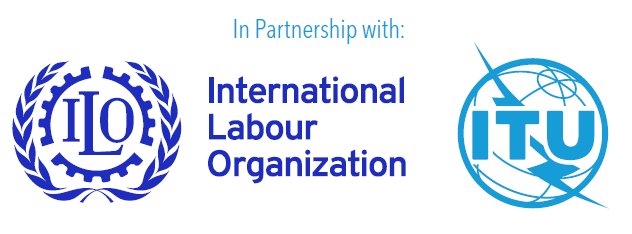Introducing
Guidebook on
Accessibility of Online Job Application and Recruitment Systems
Acknowledgements
This Guidebook was written and developed by ITU expert Ricardo García Bahamonde. It was prepared within the scope of the ITU-ILO project on accessibility of online job application and recruitment systems, under the supervision and guidance of the ITU Telecommunication Development Bureau Digital Society Division, with input provided by Jürgen Menze (Disability Inclusion Officer, ILO) and Stefan Tromel (Senior Disability Specialist, ILO).
Foreword
Information and communication technologies (ICTs) have the potential to help build stronger communities and assist people to pursue their goals and ambitions, including in the world of work. Every person should have the right to benefit fully from the digital transformation, regardless of factors such as disability, gender, age, race or where they live.
List of abbreviations
| AI | Artificial intelligence |
| CAPTCHA | Completely Automated Public Turing Test to Tell Computers and Humans Apart |
| COVID-19 | Coronavirus disease 2019 |
Introduction
Accessible information and communication technology (ICT) can level the playing field for persons with disabilities across many areas of life, including education and employment. Technology can be a major catalyst for the full participation of persons with disabilities.
Implementing information and communication technology/digital accessibility requirements and standards to ensure the inclusivity of online recruitment systems
Employers worldwide, including United Nations entities, are encouraged to make their careers websites digitally accessible to avoid preventing or dissuading job seekers with disabilities from applying and to make the applicant base as broad as possible. Accessing a larger talent pool can help employers fill jobs more quickly in an increasingly competitive job market.
Creating accessible digital content
This section includes practical, easy-to-follow guidance and recommendations for creating accessible digital content in commonly used formats. For more detailed guidance, and given the abundance and variety of guides, best practices and methodologies available on the Internet, readers are encouraged to review the resources at the end of the guide and perform their own Internet research.8
Annexes
Annex 1
Accessible online job application and recruitment systems in the context of the United Nations Disability Inclusion Strategy
Annex 2
Web accessibility policies and standards
Annex 3
Executive summary of the project entitled “Accessibility of online job application and recruitment systems”
Glossary
Accessibility:
The degree to which a product, device, service or environment (virtual or real) is available to as many people as possible
Assistive technology
Separate hardware or software added to equipment or services to enable persons with more severe disabilities to overcome barriers faced in gaining access to information and communication. Assistive technology enables or compensates for the capabilities of users with functional, motor, sensory or intellectual impairments.
Assessment
A process that includes the examination, interaction with, and observation of individuals or groups with actual or potential health conditions, impairments, activity limitations or participation restrictions. Assessment may be required for rehabilitation interventions or to gauge eligibility for educational support, social protection or other services.
